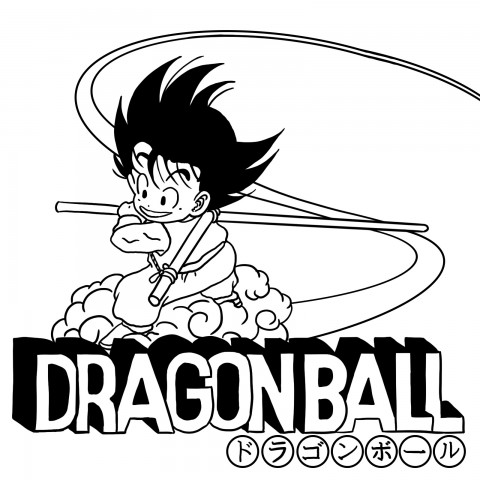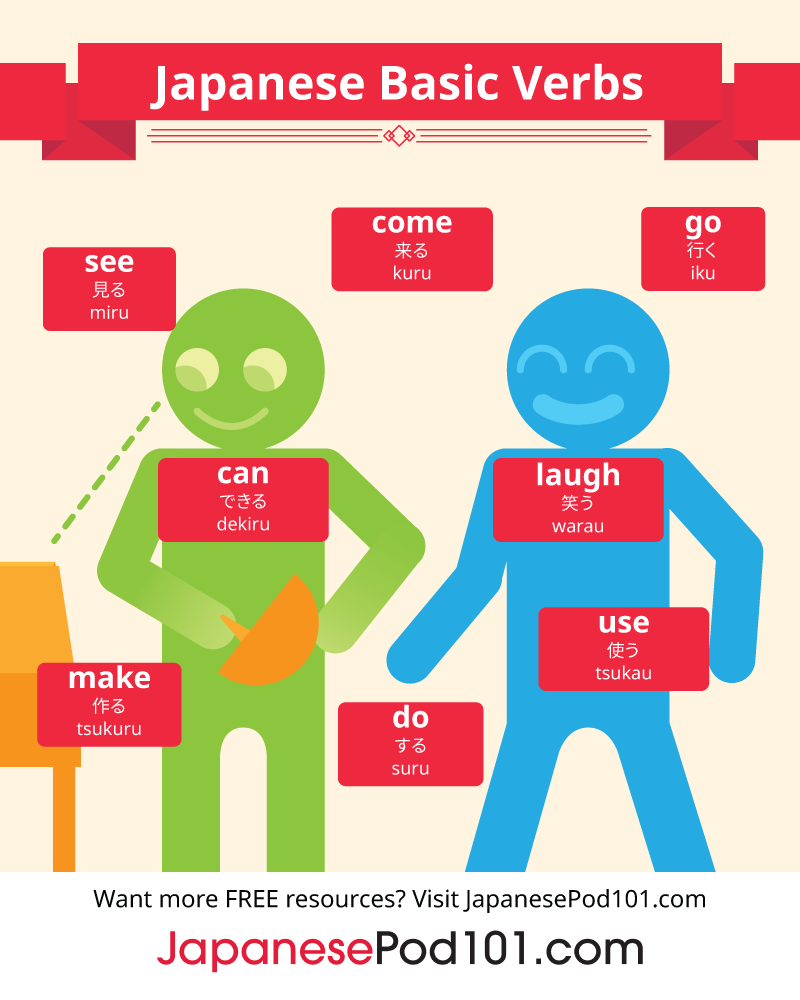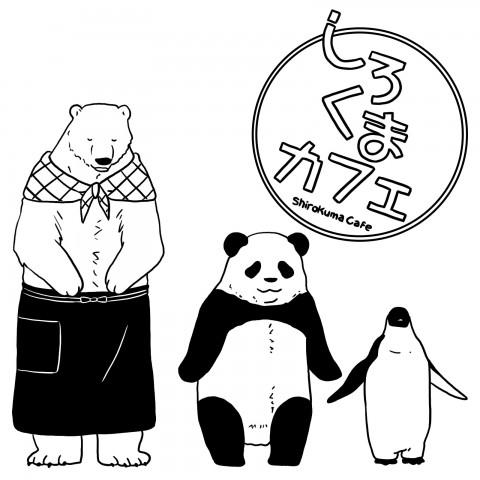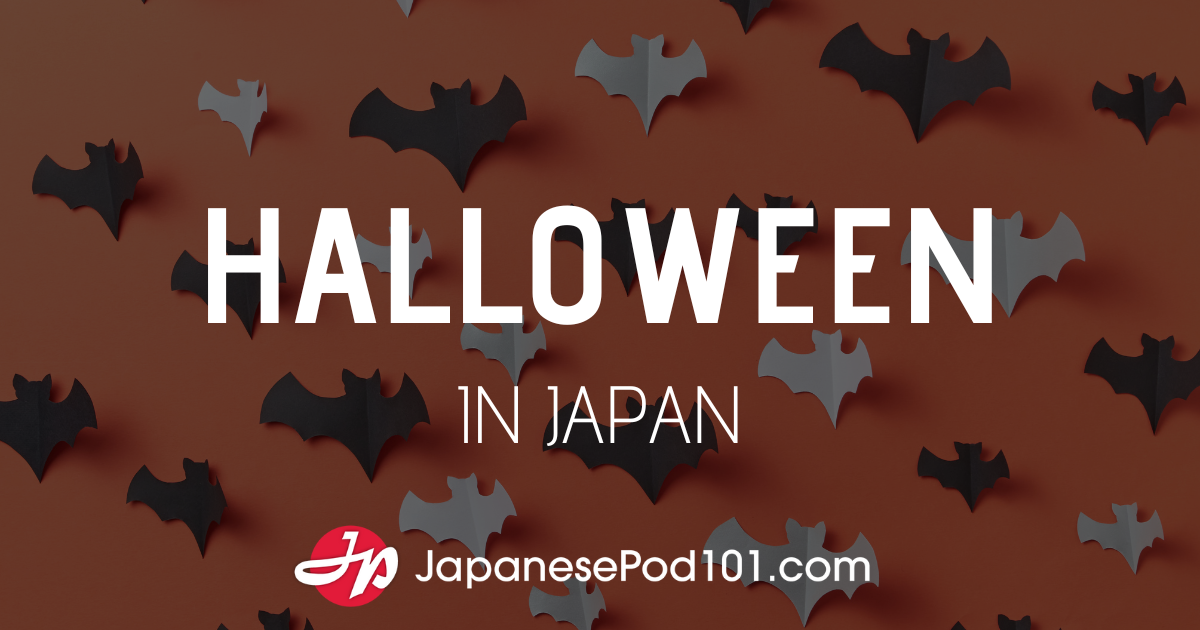Japanese anime is famous for its uniqueness and highly entertaining stories. Watching Japanese anime is a wonderful way to learn Japanese and have fun at the same time. Doing so allows you to improve your vocabulary, listening skills, and conversation skills, and can help you grasp these things in light of Japanese culture. Hearing the language in context and listening to Japanese anime audio are great ways to learn the language faster.
Japanese anime has a wide range of content, and you’ll definitely find what you love. A few of the most popular genres of Japanese anime shows include:
- Adventure
- Action
- Drama
- Romance
- Horror
So, really, whatever type of Japanese anime series or movies you’re looking for, you’re going to find it.
You can also choose Japanese anime movies according to your language level (e.g. beginner or advanced). Some Japanese anime shows even provide English subtitles to increase your understanding. These Japanese anime for beginners are a fantastic place to start.
When you get bored of studying at the desk with textbooks, check out our list of awesome Japanese anime at JapanesePod101.com, and begin watching! Don’t forget to download your gift: a FREE Anime Cheat Sheet including tips and words to watch anime without subtitles!
Table of Contents
- Where to Watch Anime
- What You Can Learn from Japanese Anime
- The Key to Learning Japanese from Anime
- List of the Best Japanese Anime
- How JapanesePod101 Can Help You Learn More Japanese
1. Where to Watch Anime
Now that you see how Japanese culture and anime are so intertwined, and what to expect, we’ll give you some information on how to watch Japanese anime movies. This includes advice on where you can find awesome Japanese anime movies and shows, how watching Japanese anime programs can benefit your language-learning, and how to get the most out of your watching time!
You can watch Japanese anime on TV or on your computer by using streaming service websites. There are many places where you can find Japanese anime episodes online! Some of the websites also have a section for manga comics and novels.
Although some websites have geological restrictions for users, you can access such websites by using a VPN (virtual private network).
| Name of Website | Subscription | Note |
|---|---|---|
| Netflix | Paid service | This streaming service is known for movies and shows, but you can also find Japanese anime on Netflix. In terms of Japanese anime, Netflix really does have some great stuff. |
| Amazon Prime Video | Paid service | This streaming service is known for movies and shows, but it also has an anime genre section. The Japanese anime Amazon Prime offers is also high-quality. |
| Hulu | Paid service | This streaming service is known for movies and shows, but it also has an anime genre section. |
| Crunchyroll | Paid service
Some content is free |
When it comes to Japanese anime, Crunchyroll is a great place to look. This is a streaming service for anime shows and manga. You can also browse manga by streaming online. |
| Anime-Planet | Free service | This is a streaming service for anime shows and manga. You can also browse manga by streaming online. |
You may also be able to find Japanese anime DVDs, but your best bet is probably one of the streaming services we mentioned above. Also keep in mind that when it comes to Japanese anime, YouTube typically isn’t the best route for watching quality content.
2. What You Can Learn from Japanese Anime
We always see this kind of advice on the Internet: “You should watch Japanese drama, it helped me to quickly progress” or “There is nothing better than anime without subtitles for learning Japanese”.
Following this advice can bring many advantages:
- Attuning your ears to Japanese by listening to native speakers.
- Boosting your vocabulary.
- Boosting your dialogue-related listening comprehension.
- Letting you hear a language used in context.
- Learning passively while having fun.
Essentially, Japanese anime dialogue can teach you all about casual conversations and phrases in Japan.
Most characters in Japanese anime tend to speak in a very informal and casual way; many Japanese anime phrases use slang words and sometimes unique made-up words.
The Japanese language uses the organized 敬語 (keigo) system, which is divided into three honorific types in the formal language:
- 丁寧語 (teineigo) — polite form
- 謙譲語 (kenjōgo) — respectable in a humble way
- 尊敬語 (sonkeigo) — respectable form
We definitely recommend that you expose yourself to a lot of resources in their original language such as anime, movies, drama, music… for the reasons mentioned above. But you will never master Japanese just with those resources. It’s difficult to learn the proper Japanese honorific language from anime, thus you have to keep in mind that Japanese anime sayings will be in very casual language. In some cases, it may even sound childish, awkward, or impolite if you speak like anime characters.
In Japanese, the way you speak—formal or informal—has to be changed based on the occasion and whom you’re talking to. The way that you talk to people depends on your relationship to them: family, friends, acquaintances, work colleagues, clients, etc. Thus, do be mindful of how and when you actually use Japanese anime expressions in daily life.
However, learning Japanese anime words is still very useful for improving your vocabulary, grammar, listening skills, and casual conversation skills.
Anime as a complement to your learning tools
It is best to see Anime as a Japanese learning complement. You need to acquire a certain amount of vocabulary and grammar in order to better comprehend a Japanese video or conversation.
This is our approach: JapanesePod101.com brings you tons of audio and video lessons, from songs to dialogues and cultural insights, and each of these lessons has a grammar focus, a vocabulary list, a lesson transcript and notes so that you don’t miss any points. We give you the foundation you need to be able to understand anime and benefit from watching it.
The myth of learning by only watching Anime
The “watch anime and learn Japanese” concept is just a myth. A lot of high school students improve their English level by reading books and comics, or watching dramas and movies in English with subtitles in their own language. You, meanwhile, might watch all 700 episodes of One Piece or Dragon Ball in Japanese but still have not made any progress!
The difference? Those foreign students are not starting from scratch when they use this method to learn Japanese. Even though they might still be at a low level, they were working on some solid foundations.
Basically what you will hear after 6 months of watching anime in Japanese while hiding the subtitles would probably be something like:
bla bla bla bla bla Hello bla bla bla bla Thank you for this meal bla bla bla bla Stupid bla bla bla How cuuuute bla bla bla bla bla It hurts! bla bla bla bla I love you bla bla bla bla bla bla really!?
Still quite far from fluency, right?
3. The Key to Learning Japanese from Anime
The key is the amount of passive vocabulary you already have. It’s all the vocabulary you understand when listening to or reading Japanese, without having the need to search in the dictionary. Our brain has a limited capacity and if it doesn’t recognize 70-80% of the words in a sentence, it will be incapable of filling in the blanks to give a sense to the unknown words based on the context.
Let’s look at these two cases:
1. You are at a beginner level of Japanese
2. You are at an intermediate level of Japanese
In both cases, you must expose yourself to a lot of Japanese media: podcasts, videos and so on…
In the first case, your brain won’t be able to analyze what you hear when you’re watching anime because you miss too many words. Of course we don’t forbid you from watching anime, but be aware that you are only training your ears to become accustomed to the sounds of Japanese. This is a good start, but you will also need to start learning basic grammar and vocabulary. Our Japanese for Absolute Beginners series will offer you the resources you need to quickly understand the foundations of the Japanese language, through entertaining topics.
 |
 |
 |
If you are at an intermediate level, you will need to acquire a lot of vocabulary covering a large range of topics. Challenge yourself with our Listening Comprehension series on YouTube, listen to our podcasts and verify through the lesson notes and transcripts that you understood everything, from the grammar point to the explanation of the kanji used in the lesson.
 |
 |
In the meantime, here is some advice on making the most of your Japanese learning! Using these tips will help make your viewing time productive, as well as entertaining:
- Choose More Realistic Anime
There are so many anime shows and Japanese animation films available to you, but we recommend that you pick the right ones for the purpose of learning Japanese, especially for beginners. Anime is so popular that many people decide to learn Japanese because of their favorite shows. But the characters in anime live in their own universe, where everyone tends to use slang, casual language, informal pronouns and even made-up words. It’s very easy to spot people who learned Japanese exclusively through anime – you’ll see 20-year-old boys talking like 10-year-old kawaii girls, or 20-year-old girls talking like yakuza!
Anime shows that are about school life, everyday life, sports, and even detective shows, are more useful for learning as they tend to use more normal and common Japanese. On the other hand, some anime, such as those in the fantasy and science fiction genres, tend to use unusual language and vocabulary which aren’t really useful in the real world.
- Focus and Listen Carefully
If you want to really learn, just watching what the anime characters are doing in the Japanese anime episode and reading subtitles aren’t enough. Listen carefully and focus on the words and phrases the anime characters use.
When you hear something you’ve never heard before, pause the video and write it down so that you can check its meaning later. Even the words and phrases you already know will be solidified in your knowledge by paying attention to how those words are used.
- Repeat
You don’t have to try to understand everything completely from the beginning. As you take time to learn, repetition will help you greatly.
For example, once you find your favorite anime or a Japanese anime movie you really like, watching a particularly great episode or the most fascinating scenes repeatedly is a great idea.
The first time, watch it with the subtitles on to understand the whole story and flow. The second time, write down the words and phrases you don’t know or that you’re interested in learning; look up their meaning and usage. The third time, while focusing on listening, check how those words and phrases are used with the subtitles on. The fifth time, watch again without the subtitles and see if you can catch the words you learned. Over time, you’ll be able to watch Japanese anime in Japanese with no problems at all!
Repetition is the key to improved learning, not only when it comes to Japanese anime, but even for subjects in school or sports!
Anime can be a great learning tool because it’s fun and there is a lot of it around. Just make sure to do a little extra work to optimize its use! Don’t forget to sign up for your Free Lifetime Account to access all our resources, and soon enough you’ll be able to watch anime without subtitles!
4. List of the Best Japanese Anime
1- Dragon Ball Z :ドラゴンボール Z
- Dragon Ball Z has been one of the most famous and classic Japanese anime shows for many decades throughout the world. It’s been broadcasted in over eighty countries, together with Dragon Ball, which is the original anime show (Dragon Ball Z is the sequel).
The story of this Japanese anime TV show is about the adventures of the protagonist Goku, who fights (with his companions) against various villains to protect and bring peace to the world. The story and the settings continue over many seasons, and the characters also succeed generations; for example, viewers get to see Goku’s and other main characters’ children. The main scenes are mostly battles and fights between the main characters and villains, but it also contains comic relief and hilarious interactions between the characters.
- The language used in this anime is very casual and basic. However, many made-up words are also used, such as the names of plants, people, and signature move techniques. Some characters’ speech patterns are unique, and it’s recommended that you don’t use them in the real world.
For example, personal pronouns:
- Calling yourself オラ (ora), instead of using 俺 (ore), 僕 (boku), or 私 (watashi) for the word “I,” is strange.
- Calling other people 貴様 (kisama), おめえ (omē), or てめえ (temē) is very rude. Instead, the proper words for “you” are あなた (anata) or 君 (kimi).
- Vocab / Phrases from Dragon Ball Z:
- オラ、腹減ったぁ!
Ora, hara hetta!
I am hungry! - よーし!負けねぇぞ!
Yōshi! Makenē zo!
Alriiiiiiight! I won’t lose! - まっ、いっか
Ma, ikka
Well, whatever (it doesn’t matter).
This is said in a casual and comic way. If you want to say it in a usual and polite way, it’s Watashi wa onaka ga herimashita.
This is said in a very casual manner and in a masculine way. This phrase is often used before a battle.
This phrase is often used in informal situations when you take it easy on something.
2- Lupin the III:ルパン三世
- Lupin the III (the third) is another one of the most classic Japanese anime shows, and has been broadcast around the world. It has many anime series and movies, both animation and live-action. It’s still broadcasted until now, celebrating its fifty-year anniversary. Lupin the III is well-known and popular among many people, across generations.
The story is about Lupin and his gang companions who are proud of being the world’s greatest thieves, stealing valuable objects around the world. Wherever there’s legacy treasure and reputable works, Lupin shows up and performs a daring theft in front of inspector Zenigata who chases Lupin to arrest him.
Each character is very interesting and each episode is independent. This slapstick comedy is fun and easy to watch.
- The language used in this anime is very casual, and some villains often use rough and gruff language. Each character also has a very unique way of speaking, such as Lupin’s comical tone, Jigen’s hard-headed tone, Goemon’s Japanese samurai tone, and Fujiko’s sexy and charming tone.
- Vocab / Phrases from Lupin the III:
- 俺は脱走の天才だ!
Ore wa dassō no tensai da!
I am a genius of escape! - 道がなけりゃ作っていくまでよ
Michi ga nakerya tsukutte iku made yo
When there’s no path, we shall make it. - 俺に任せろ!
Ore ni makasero!
Leave it to me! (I’ll take care of it.)
This is a signature phrase, used when Lupin escapes from entrapment or captivity.
This phrase is used by a man, as 俺 (ore) is a masculine and informal version of the first person pronoun.
3- Detective Conan “Case Closed” : 名探偵コナン
- Detective Conan “Case Closed” is a famous Japanese detective manga and anime series which has been broadcast for more than twenty years, and in over forty countries.
The story revolves around the high school detective protagonist Jun’ichi, who was poisoned by a mysterious syndicate and accidentally transformed into a child. While he tries to unmask the syndicate and their crimes, he lives as a child named Conan (taken from Arthur Conan Doyle, the author of Sherlock Holmes). Meanwhile, he solves many cases that happen around him and his friends.
- The language used in Detective Conan is a mix of formal and casual. Beginner learners may find it hard to understand because they use difficult vocabulary, such as the names of chemical substances (poisons) and trick techniques using physics. However, it’s very fun to watch if you love mystery-solving.
- Vocab / Phrases from Detective Conan:
- 真実はいつも1つ!
Shinjitsu wa itsumo hitotsu!
The truth is always only one! - 完璧なんてこの世にはねぇよ
Kanpeki nante kono yo ni wa nē yo
There is no perfection in this world. - オレを信じろ、100%成功する!
Ore o shinjiro, 100 pāsento seikō suru!
Believe me, it will succeed 100%!
This phrase is used by a man, as 俺 (ore) is a masculine and informal version of the first person pronoun.
4- Attack on Titan:進撃の巨人
- The first series of Attack on Titan began in 2009, and it has become very popular for its unique story, attractive characters, and intriguing action scenes. The anime was also adapted into a live-action movie, and in addition, Hollywood is planning a remake of this movie.
The story is set in a fantasy world where humanity lives within “shelter” territories surrounded by three huge walls that protect them from gigantic man-eating humanoids called “Titans.” The protagonist Eren, along with his companions, goes on his adventure to fight against the Titans.
- The language used in Attack on Titan is casual and normal Japanese, without distinctive or eccentric ways of speech. Therefore, it’s relatively easy to understand.
- Vocab / Phrases from Attack on Titan:
- 戦わなければ勝てない…
Tatakawanakereba katenai…
We can’t win if we don’t fight… - あなたがいれば私は何でもできる
Anata ga ireba watashi wa nan demo dekiru
I can do anything if you are here (with me). - 仕方ないでしょ…世界は残酷なんだから…
Shikata nai desho… sekai wa zankoku nan da kara…
It can’t be helped…because the world is cruel…
5- Slam Dunk:スラムダンク
- Slam Dunk is one of the most famous and classic Japanese sports anime shows. Slam Dunk was first published in 1990 (anime show from 1993), and it holds the record for being the best-selling manga series in history at that time.
The story is set in a high school, where the protagonist Hanamichi Sakuragi, a delinquent high school student, joined the basketball club. He had to start learning how to play basketball from scratch, but he has a good physical structure and strength ideal for basketball. The team strives to win the national high school tournament to become the number-one team in the country.
- The language used in Slam Dunk is very casual and normal everyday speech between friends, team members, and the high school basketball coach.
- Vocab / Phrases from Slam Dunk:
- あきらめたらそこで試合終了ですよ
Akirametara soko de shiai shūryō desuyo
The game will be over now if you give up. - 俺は俺の仕事をする!
Ore wa ore no shigoto o suru!
I do what I have to do! (I do my job.) - チャンスの時こそ平常心だ
Chansu no toki koso heijōshin da
Composure is important, especially in the time of chance.
This phrase is very famous among Japanese people who have seen this anime. This phrase is often used in situations where you want to encourage someone.
This phrase is useful when advising someone not to get too excited or lose calm judgment in the moment.
6- One Piece:ワンピース
- One Piece is another long-running Japanese manga and anime that started in 1997 and still continues with over 800 episodes. One Piece is popular and loved by many fans around the world; it’s praised for its unique storytelling, characterization, art, and humor. It has also been adapted to movies and video games.
The story revolves around Luffy, proclaiming himself the King of the Pirates, and his companions who start their journey to find the famed treasure. One Piece depicts friendship, dreams, adventure, battles, and moving events.
- The language used in One Piece is informal and very casual.
- Vocab / Phrases from One Piece:
- 海賊王”に! おれはなる!
Kaizokuō ni! Ore wa naru!
I will become the King of Pirates! - 楽に行こうぜ!
Raku ni ikō ze!
Let’s take it easy! - 私も一緒に海へ連れてって!
Watashi mo issho ni umi e tsurete tte!
Take me to the ocean together, too!
This is said in a very casual and masculine way.
7- K-On! : けいおん!
- K-On! is a Japanese manga and anime series first published in 2007. The title of K-On (read as keion) comes from the word 軽音楽 (kei-ongaku), which means “light music” or “popular music” in Japanese. K-On! has become very popular in Japan, and it earned more than 38-billion yen by March 2012.
The story follows four female students who joined the music club at their high school, but they are the only members. They try to become a famous band, aiming to be national musician stars. It’s fun to watch how they struggle to master their musical instruments, the growth of their friendship, and their day-to-day life in high school.
- The language used in K-On! is very casual, spoken among friends and peers. Some characters use unique and girlish (and a bit childish) speech patterns. They also tend to use more music-related vocabulary.
- Vocab / Phrases from K-On!:
- おっはー!
Ohhā!
(Good) morning! - ここからが本番だな
Koko kara ga honban da na
Get on to the real thing from now on. - 大切なのは、過去じゃなくて、今だよ
Taisetsu na no wa, kako janakute, ima da yo
The important thing is not the past, but now.
This is said in a casual and kind of cute way. It’s a slang which became popular among young people a while ago.
8- Bleach:ブリーチ
- Bleach is an award-winning Japanese manga and anime series first published in 2001; the anime was broadcast between 2004 and 2012. The manga comics have sold more than 120-million copies around the world. It has also been adapted into movies (some of the best Japanese anime adventure movies), musicals, card games, video games, and more.
The story is about a high school student named Ichigo who became a Shinigami, or a fighter against demonic spirits. He goes on a quest to fight and protect the human world from “hollows,” which are souls of people who died but couldn’t move on to the next world. The world of Bleach is very unique, and you’ll easily get drawn into the enjoyable story.
- The language used in Bleach is a bit difficult for beginner learners to understand; it includes descriptions of different worlds, the status of souls, functions and abilities, etc. However, it’s a very interesting anime and good learning material for intermediate and advanced learners.
- Vocab / Phrases from Bleach:
- ちくしょう…!強くなりてぇな…
Chikushō…! Tsuyoku naritē na…
Damn it…! I want to be strong… - 誓ったんだ..ただ俺の魂にだ!
Chikatta n da… tada ore no tamashii ni da!
I swore…only to my soul! - 助けに来たぜ
Tasuke ni kita ze
I came to help (you).
This is said in a casual and rough (masculine) way.
This is said in a casual and masculine way.
9- Polar Bear Café:しろくまカフェ
- Polar Bear Café is a Japanese anime show with a warm and relaxed feel. The manga comic was first published in 2006, and the anime show was broadcast in 2012 and 2013. The art style of the anime looks more targeted for children; however, interestingly enough, anyone can enjoy watching this anime.
The story revolves around a polar bear that runs a café, and his animal friends (who are customers), which are a panda, a penguin, and so on. They discuss various things about life, do silly animal things, and enjoy their everyday lives. The anime has a lot of gags, and it’s very funny.
- The language used in Polar Bear Café is a mix of formal and informal, depending on scenes. For example, the characters have formal conversations in workplace settings. However, it’s easy to follow conversations, as they speak relatively slowly. This show is recommended for beginners.
- Vocab / Phrases from Polar Bear Café:
- みんな、またね!
Minna, mata ne!
Everybody, see you (again). - 気が散るから話しかけないで
Ki ga chiru kara hanashikakenaide
Don’t talk to me because I get distracted. - 良かったらピザどーぞ!
Yokattara piza dōzo!
If you like, please have pizza!
This is a useful phrase to use when meeting your friends.
This is said in a casual but polite way.
10- Sword Art Online:ソードアート・オンライン
- Sword Art Online is one of the new-generation anime that depicts an intriguing story and the exciting virtual-reality world. It was originally an online novel published in 2002, which was later adapted into manga and the anime series.
The story is set in 2022 and VR (virtual reality) becomes real. The users of this VR game can’t log out, and they’re stuck in the VR world as they’re playing. They can log out and finish only when they complete the whole game, and if a player dies in the game, the die in the real world too. The protagonist Kirito decides to fight against the system. In addition to the action and battles in the game, the anime depicts friendship and love among anime characters.
- The language used in Sword Art Online is casual and the vocabulary is relatively easy. Although it’s a fantasy anime about the VR world in the future, they don’t use many invented words.
- Vocab / Phrases from Sword Art Online:
- 次は現実世界で会おう
Tsugi wa genjitsu sekai de aō
Let’s meet next time in the real world. - 行こう、きっと何とかなるさ
Ikō, kitto nantoka naru sa
Let’s go, it will probably be alright. - 終わったんだね…ようやく…君に会えた
Owatta n da ne… yōyaku…kimi ni aeta
Everything has ended…at last…I could see you (finally).
5. How JapanesePod101 Can Help You Learn More Japanese
In this article, we introduced the best Japanese anime for learning Japanese, and gave you advice on how to make the best use of your time when watching them. Japanese anime characters and stories are always unique and fun! We hope you find your favorite Japanese anime here, and that it helps your Japanese studies.
Have you already seen any of the Japanese anime shows in this article? Do you want to know more about learning Japanese through Japanese anime? Let us know in the comments section!
If you would like to learn more about the Japanese language, you’ll find a lot of helpful content on JapanesePod101.com. We provide a variety of free lessons for you to improve your Japanese language skills.
Here’s some more information about Japanese anime with audio: Top 10 Japanese Anime, Top 10 Anime to Help You Learn Japanese, Anime Fighting Expressions, and Top 30 Anime Words & Phrases.
To learn more about Japanese conversations, check out Top 15 Questions You Should Know for Conversations and Top 10 Conversational Phrases.
There’s even more valuable information on our website! Be a fast learner and enjoy studying Japanese at JapanesePod101.com!

















